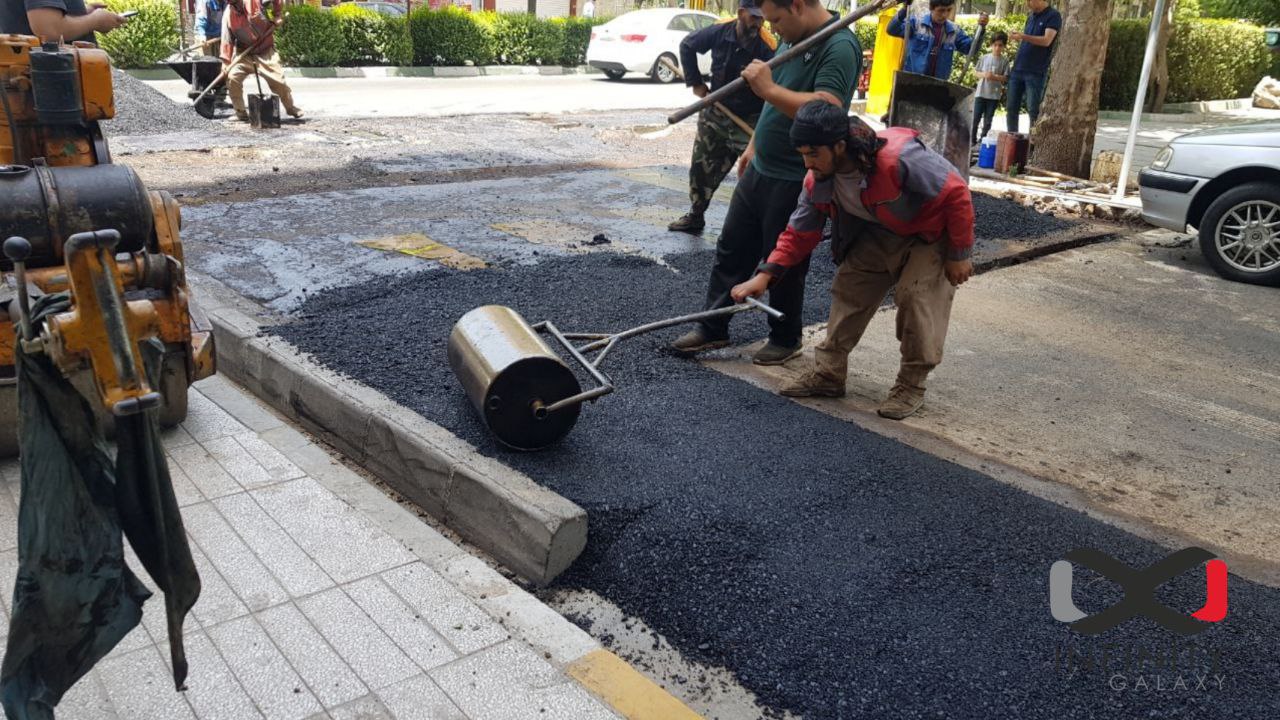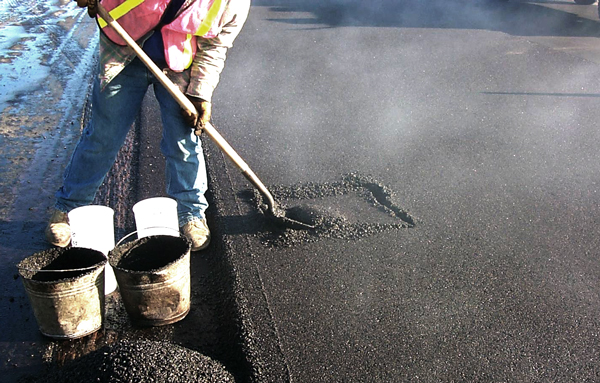Hot Mix Asphalt: The Structure for Safe and Secure Angled Parking Lots
Hot Mix Asphalt: The Structure for Safe and Secure Angled Parking Lots
Blog Article
Unlocking the Secrets of Hot Mix Asphalt Technology
Checking out the depths of hot mix asphalt innovation discovers a world where thorough procedures and specific solutions merge to form our roadways and framework. The blend of binders, fillers, and accumulations isn't simply a building and construction job however a calculated orchestration of toughness and performance. As we peer right into the intricate dancing of parts, a tapestry of durability and sustainability unfolds. What exists below this surface of asphaltic proficiency, and what tricks wait to be unveiled in the realm of leading technologies?
Relevance of Hot Mix Asphalt
Hot Mix Asphalt plays a vital duty in modern framework advancement due to its durability and cost-effectiveness. As the most frequently made use of leading product for roadways, freeways, and car parking lots, Hot Mix Asphalt uses a variety of advantages that contribute to its value in building jobs.
The longevity of Warm Mix Asphalt stems from its composition, which includes aggregates, binder, and filler materials that are thoroughly chosen and mixed to meet specific performance demands. This specific mix leads to a strong and flexible sidewalk that can sustain regular usage without substantial deterioration. Hot Mix Asphalt is 100% recyclable, further boosting its sustainability and ecological advantages. On the whole, the value of Hot Mix Asphalt in infrastructure growth can not be downplayed, as it continues to be a cornerstone of modern-day construction techniques.
Parts of Asphalt Mixes
The composition of asphalt blends includes thoroughly picked aggregates, binder, and filler materials that are important for attaining certain performance needs. Aggregates are the key element of asphalt blends, offering toughness and stability. These accumulations can be natural, such as crushed rock or smashed stone, or artificial, like recycled materials from old pavements. The binder, generally asphalt or asphalt cement, holds the aggregates together and gives versatility and durability to the mix. The choice of the binder is crucial as it directly affects the mix's efficiency in various weather problems. Fillers, such as moisturized lime or Portland concrete, are made use of to improve the mix's workability and aging resistance. Angled Parking.
The mix and percentage of these parts play a substantial duty in determining the quality and performance of the asphalt mix. Engineers carefully develop the mix to meet particular demands, thinking about elements like web traffic volume, climate conditions, and pavement life-span. Correct option and harmonizing of accumulations, binder, and fillers are necessary for producing long lasting, durable asphalt pavements.
Combining and Manufacturing Methods

When the aggregates are chosen, the binder, frequently asphalt concrete, is included to bind the materials together. The binder's high quality and quantity substantially affect the mix's stamina, resistance, and versatility to environmental elements. Additionally, fillers like moisturized lime or Rose city concrete may be integrated to enhance specific characteristics of the asphalt mix, such as its workability or dampness resistance.
Throughout production, the aggregates and binder are warmed, commonly between 250-325 ° F(121-163 ° C ), to facilitate blending and make sure appropriate finishing of the aggregates. The blending process should be thorough to attain an uniform combination that advertises the preferred performance features of the asphalt. Different techniques, such as set mixing or drum blending, are utilized to achieve premium and constant asphalt mixes for building projects.
Aspects Affecting Asphalt Efficiency
Elements affecting asphalt performance incorporate an array of variables that affect the resilience, long life, and general top quality of asphalt pavements. One vital element is the top quality of materials made use of in the asphalt mix. The type and resource of aggregates, the binder top quality, and the additives all play a substantial role in figuring out the performance of the asphalt pavement. The rank of aggregates is vital as it influences the mix's workability, resistance, and security to rutting and fracturing.

Ecological you could try this out problems likewise influence asphalt efficiency. Temperature variations, dampness infiltration, and website traffic loads can all affect the architectural stability of the sidewalk. Design considerations, such as pavement thickness and drainage, are vital in making sure the lasting performance of the asphalt sidewalk. By thoroughly thinking about these elements, service providers and designers can maximize asphalt efficiency and enhance the service life of pavements.
Lasting Practices in Asphalt Technology

WMA allows for the manufacturing and placement of asphalt mixes at lower temperatures contrasted to conventional hot-mix asphalt, resulting in decreased energy consumption and greenhouse gas exhausts. The usage of porous asphalt blends can aid reduce stormwater overflow problems by allowing water to penetrate with the sidewalk and right into the ground, promoting natural water filtration and charge processes.
Verdict
In conclusion, warm mix asphalt technology plays a critical function in modern-day framework development because of its durability and cost-effectiveness. By carefully stabilizing parts, using correct mixing techniques, and considering various factors, engineers can create high-quality asphalt mixes that stand up to rush hour loads and severe climate condition. Accepting lasting methods, such as making use of recycled materials and warm-mix technologies, even more enhances the environmental friendliness of asphalt innovation.
Mixing and manufacturing techniques in hot mix asphalt modern technology entail the precise mix and processing of accumulations, binder, and fillers to the original source produce a long lasting and high-performance asphalt mix.Elements affecting asphalt performance incorporate a range of variables that impact the sturdiness, durability, and total top quality of asphalt sidewalks. Sustainable methods in asphalt modern technology incorporate numerous campaigns intended at reducing the environmental impact of asphalt manufacturing and paving procedures. By including redeemed asphalt sidewalk (RAP) and recycled asphalt shingles (RAS) into new asphalt mixes, the industry can dramatically decrease the intake of raw materials and energy, while additionally reducing land fill waste.
WMA allows for the production and placement of asphalt mixes at lower temperature levels contrasted to typical hot-mix asphalt, resulting in decreased energy consumption and greenhouse gas emissions.
Report this page